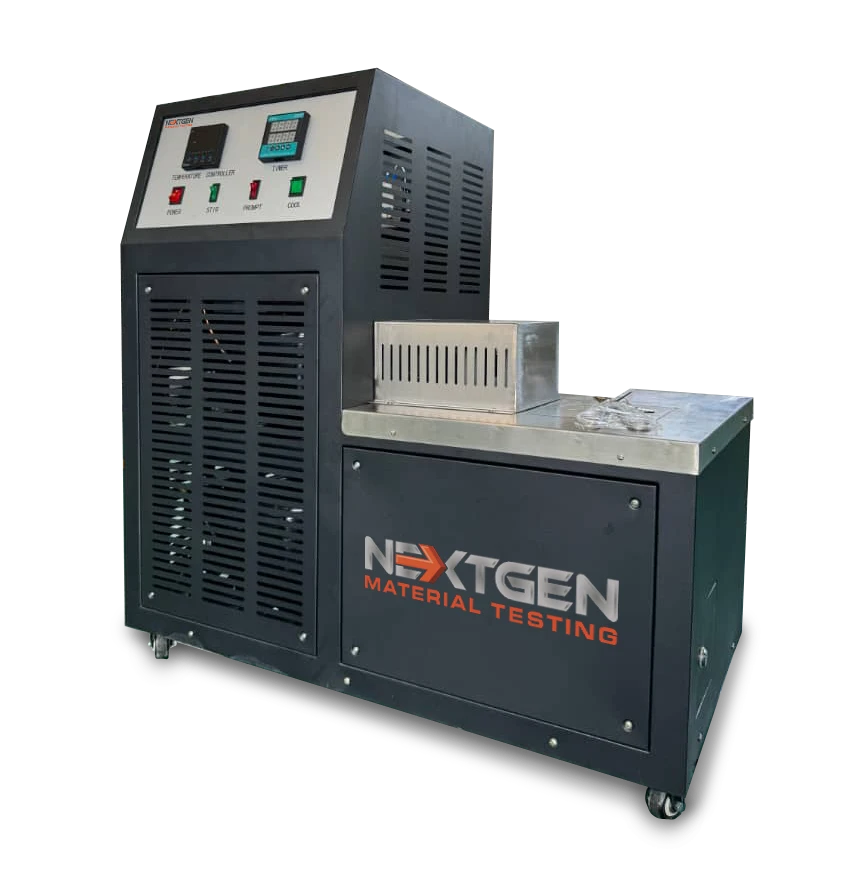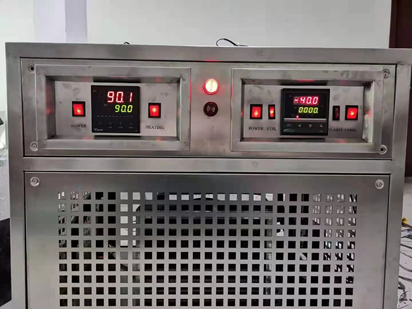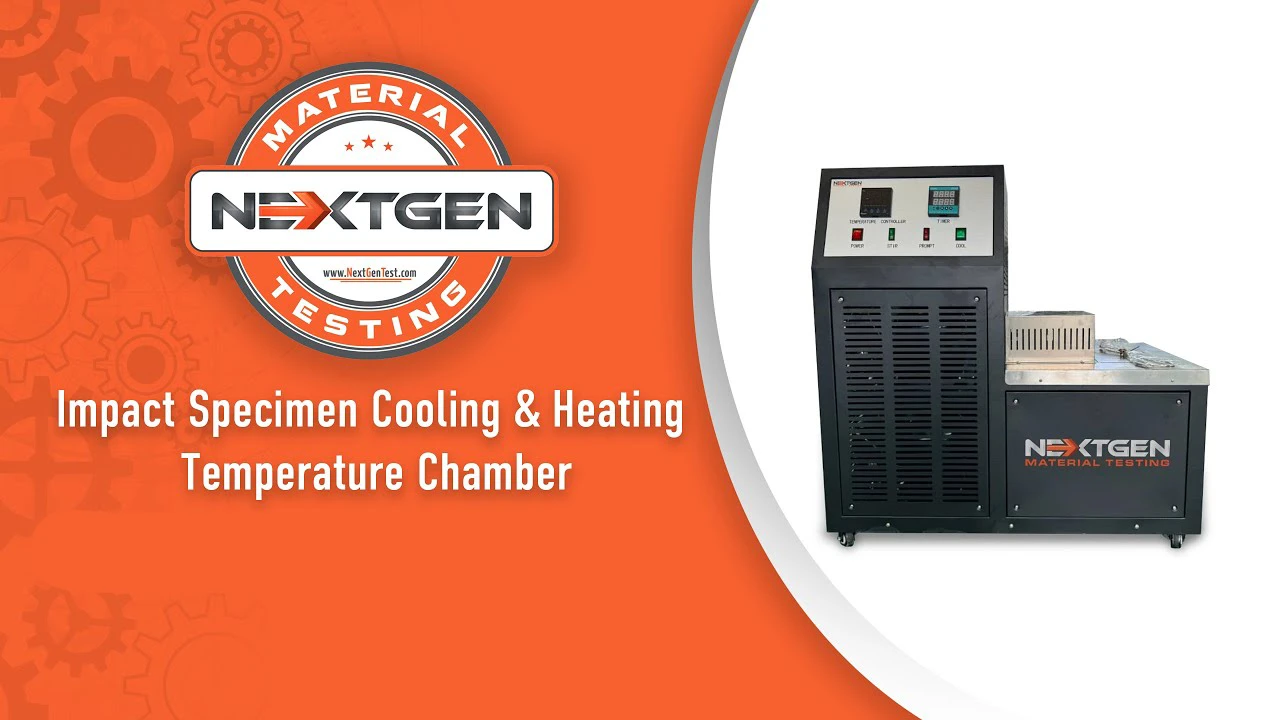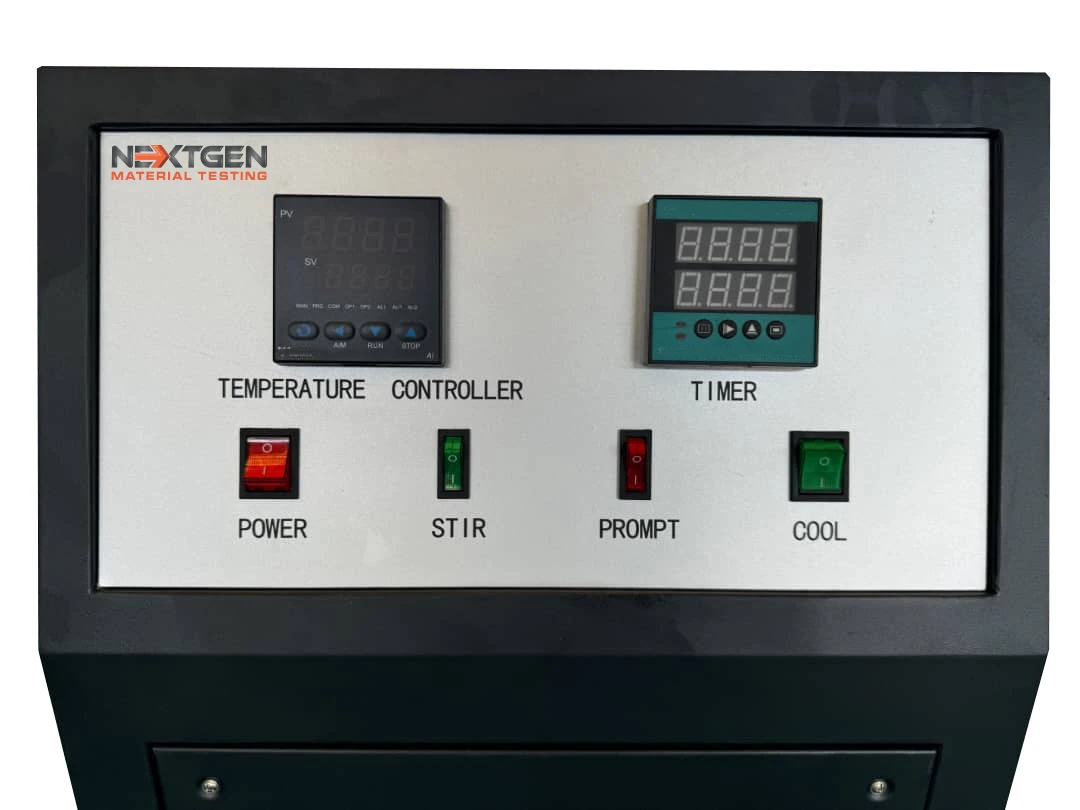How can engineers be certain that an impact test tells the full story about a material’s performance? The answer often lies in how the specimens are prepared before the pendulum ever strikes them. Temperature has a powerful effect on metals: a sample chilled to subzero conditions can fracture suddenly, while the same material at elevated temperatures may bend or deform without breaking. If specimens are not conditioned correctly, test results can vary and may not reflect the real performance of the material.
That is why the GenChamber was developed. It is a specialized cooling and heating chamber developed for the precise preparation of Charpy and Izod impact specimens. In this review, we will walk through what the GenChamber is designed to do, its technical capabilities, how it helps labs meet international standards, and why different industries use this type of system to make their testing more dependable and consistent.
Product Description – What is GenChamber
 The GenChamber is a dual-function system built to condition impact test specimens at both extremely low and elevated temperatures. It cools specimens down to –80 °C and heats them to +100 °C, giving laboratories full control over how materials are prepared before Charpy and Izod testing. Instead of relying on liquid nitrogen, dry ice, or conventional ovens, the chamber uses a compressor-based refrigeration system for cooling and a stainless-steel electric heating unit with forced air circulation for heating. This design keeps all specimens under the same controlled conditions during preparation.
The GenChamber is a dual-function system built to condition impact test specimens at both extremely low and elevated temperatures. It cools specimens down to –80 °C and heats them to +100 °C, giving laboratories full control over how materials are prepared before Charpy and Izod testing. Instead of relying on liquid nitrogen, dry ice, or conventional ovens, the chamber uses a compressor-based refrigeration system for cooling and a stainless-steel electric heating unit with forced air circulation for heating. This design keeps all specimens under the same controlled conditions during preparation.
The GenChamber uses PID temperature control and a digital display with 0.1 °C resolution to keep conditions steady. Circulating mechanisms maintain thermal equilibrium, while built-in alarms notify the operator once the target temperature is reached. Built-in safety functions prevent overheating and power issues, making daily use safer. For testing teams, the result is straightforward: consistent specimen preparation and a straightforward workflow that aligns with international standards such as ISO 148, ASTM E23, and ASTM E74.
Understanding the Standards Behind GenChamber
Before looking at technical details, it is important to understand the testing standards that guide impact specimen preparation. The GenChamber is designed in compliance with leading international standards so that laboratories can meet international testing requirements.
- ISO 148-1 – Metallic materials — Charpy pendulum impact test — Part 1: Test method: Defines how Charpy impact tests must be carried out, including specimen dimensions, temperature control, and transfer time requirements.
- ASTM E23 – Standard Test Methods for Notched Bar Impact Testing of Metallic Materials: Provides procedures for Charpy and Izod testing, emphasizing precise specimen conditioning and consistent test execution.
- ASTM E74 – Standard Practice of Calibration of Force-Measuring Instruments for Verifying the Force Indication of Testing Machines (Class AA): Focuses on calibration accuracy of testing equipment, ensuring the energy readings during impact tests are reliable and traceable.
- ISO/IEC 17025 – General Requirements for the Competence of Testing and Calibration Laboratories: Establishes the framework for laboratory quality systems and traceability, supporting accreditation and credibility of results.
- EN 10045 – Charpy Impact Test on Metallic Materials: A widely used European standard that sets additional procedures for impact testing of metals, closely aligned with ISO 148.
Technical Parameters
Of course, it is important to review the technical parameters in order to clearly understand what the GenChamber is capable of. The key specifications are outlined below:
- Range of Control Temperature: The low-temperature chamber operates from +30 °C down to –80 °C when the ambient temperature is 25 °C or below, while the high-temperature chamber ranges from +30 °C up to +100 °C under the same ambient conditions.
- Temperature Control Accuracy: At low temperatures, the accuracy is within ±0.5 °C, while at high temperatures it remains tighter than ±1 °C, which makes the results dependable.
 Display Resolution: The digital display provides readings with a resolution of 0.1 °C so operators can easily monitor changes
Display Resolution: The digital display provides readings with a resolution of 0.1 °C so operators can easily monitor changes- Cooling Speed: The chamber cools from +30 °C to 0 °C at approximately 2 °C per minute, from 0 °C to –20 °C at about 1.5 °C per minute, from –20 °C to –60 °C at around 1 °C per minute, and from –60 °C to –80 °C at roughly 0.7 °C per minute.
- Heating Speed: Heating progresses from +20 °C to +50 °C at about 2 °C per minute, and from +50 °C to +100 °C at approximately 3 °C per minute.
- Working Area (L × W × H): Both the low-temperature and high-temperature chambers provide an internal space of 5.9 × 5.5 × 4.7 inches (150 × 140 × 120 mm), suitable for standard specimen sizes.
- Specimen Capacity: The system holds between 60 and 120 specimens, based on the standard size of 10 × 10 × 55 mm, making it practical for batch preparation.
- Outer Dimensions (L × W × H): The overall unit measures 25.6 × 20.0 × 29.9 inches (650 × 510 × 760 mm), offering a compact footprint for laboratory environments.
- Timer: The chamber includes a programmable timer adjustable from 1 to 99 minutes with 1-second resolution for precise conditioning control.
- Cooling Medium: The cooling chamber operates with ethyl alcohol of at least 99.5% purity, while the heating chamber uses air circulation for uniform temperature distribution.
- Stirring Motor Power: The built-in stirring motor provides 23 W of power to maintain circulation and temperature equilibrium.
- Power Supply: The system runs on single-phase power at 110 V, 60 Hz, with a total requirement of 2.5 kW.
Standard Configuration
To make setup simple and to keep the system ready for everyday use, the GenChamber is delivered with a complete standard configuration. Each unit includes the following:
- Main Unit: One fully assembled chamber system designed for both cooling and heating modes.
- Cooling Compressor: A dedicated compressor set that provides consistent low-temperature performance down to –80 °C.
- Stainless Steel Heating Pipes: Durable, corrosion-resistant heating components built for stable high-temperature operation.
- High-Precision Intelligent Temperature Controller: One controller that manages PID regulation, display accuracy, and safety protections.
- Stainless-Steel Inner Chamber: Resistant to corrosion and aging, ensuring durability under repeated cycles of cooling and heating.
- Sample Baskets: Three baskets for the high-temperature chamber and three baskets for the low-temperature chamber, allowing batch conditioning of specimens.
- Power Transformer: The included transformer converts 110 V input to 220 V output for flexible installation in different laboratory settings.
Who Uses GenChamber – Industry Applications & Use Cases
Laboratories and testing teams across different industries rely on precise specimen conditioning to ensure accurate and reliable impact testing. Here’s a breakdown of where systems like GenChamber add real value:
1. Materials Testing Labs and Research Facilities
Routine conditioning is essential before Charpy or Izod impact tests to comply with standards such as ISO 148 and ASTM E23. Labs preparing specimens at precise temperatures use equipment like GenChamber for consistency and repeatable test results.
2. Aerospace and Defense
Aircraft components must resist high-speed impacts in sub-zero conditions. Thermal conditioning allows testing of materials such as composites and alloys for toughness at altitude or in cold environments.
3. Automotive
Crashworthiness tests can lose meaning if specimens are not conditioned to represent winter or arctic conditions. Cooling chambers help engineers evaluate safety-critical parts like frame rails and suspension components under realistic thermal scenarios.
4. Energy and Oil/Gas
Pipelines and pressure vessels operating in arctic or elevated terrains require impact toughness certification at low temperatures such as –50 °C. Conditioning chambers help labs meet toughness requirements for linepipe steels and reactor materials.
5. Shipbuilding and Marine
Icebreakers and offshore platforms must withstand freezing seas that can make steel brittle. Pre-testing specimens at marine temperatures ensures structural integrity in real-world cold-water scenarios.
6. Mining and Heavy Industry
Equipment in these industries faces sudden loads and temperature variations in extreme environments. Conditioning under controlled settings makes the testing reflect the actual behavior of the material before field deployment.
7. Academia and R&D
Researchers studying material behavior, such as composites in cold marine environments, use impact conditioning to evaluate toughness degradation at very low temperatures.
Why GenChamber Matters for Impact Testing
The GenChamber combines cooling and heating in one system, allowing specimens to be prepared from –80 °C to +100 °C under controlled conditions. Its design with compressor-based refrigeration, forced-air heating, PID control, and safety functions makes day-to-day work in the lab straightforward and dependable.
If you would like to learn more about this chamber, visit the product page. There you will find expanded details, documentation, and a section with frequently asked questions.
For anything not covered, or if you would like to request a tailored quote, please contact us directly or use the online quote form. Our team will respond promptly and provide the details you are looking for.

